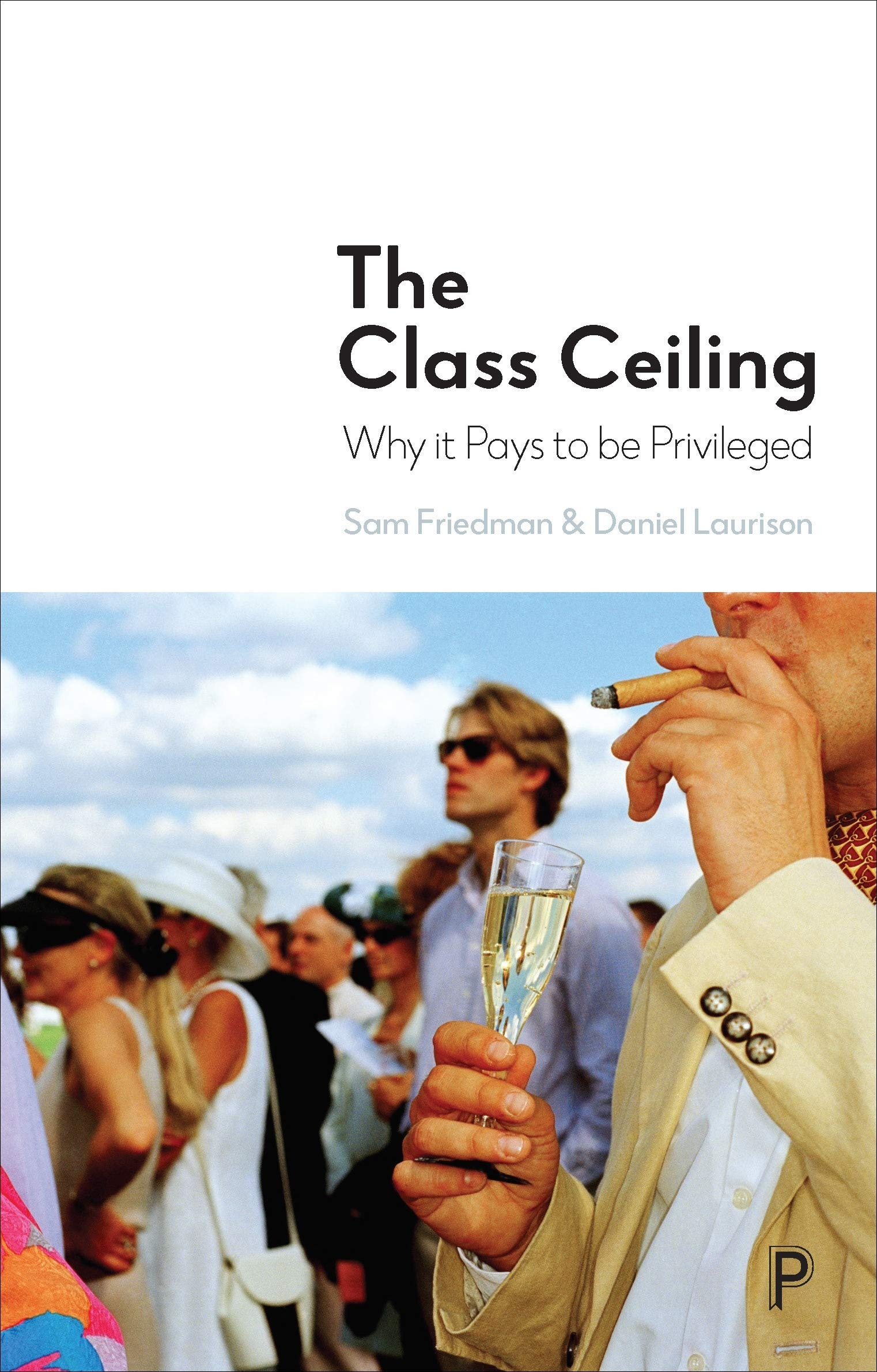
This article is a preview from the Autumn 2019 edition of New Humanist
The Class Ceiling: Why It Pays to Be Privileged (Policy Press) by Sam Friedman and Daniel Laurison
The term “glass ceiling” was coined to identify the hidden barriers which hold high-achieving women back from reaching the top in their chosen field. Something less acknowledged as an impediment to success, though just as pernicious, is socioeconomic background, or class.
Sam Friedman and Daniel Laurison’s The Class Ceiling: Why It Pays to Be Privileged begins with an overview of the past 30 years in which “the end of class” as a meaningful factor of identity was endlessly proclaimed by academics, media and politicians – and then traces the failure of class to diminish in significance for individuals’ life chances. The book reinforces other recent work including Jo Littler’s Against Meritocracy (2018, Routledge) and the Arts Emergency study Panic! Social Class, Taste and Inequalities in the Creative Industries.
This body of analysis has identified persistent barriers to progress by working-class professionals, helping to counter the claim that contemporary Britain is a “meritocracy” in which equality of access to top careers mitigates any inequality of outcome. That deep-rooted assertion makes the problem of class disadvantage more difficult to recognise, discuss or ameliorate.
Built around almost 200 interviews with employees in accountancy, architecture, television and acting, The Class Ceiling enumerates the factors which drive class advantage in elite occupations. It investigates why working-class employees find it hard not only to gain access to these fields, but also to progress once there – earning, on average, 16 per cent less than their more privileged peers. Several mechanisms propel the already privileged on to greater success, especially the ability to rely on “The Bank of Mum and Dad”, whereby family wealth can tide them over through the periods of precarity or unpaid internships often necessary to land creative or media careers. Equally important are connections made through family, school or university, which can enable informal sponsorship or mentoring within particular industries. Meanwhile, the blend of social confidence and cultural capital instilled by an elite upbringing allows individuals to capitalise on contacts and to present themselves, through shared behavioural cues and frames of reference, as better able to “fit in with the tribe” of potential employers, who often – not always consciously – recruit in their own image.
As The Class Ceiling makes clear, granular distinctions between lower and middle-class fractions fade into relative insignificance compared to how the elite background of a few individuals allows them to progress smoothly from top families, through top schools and universities, to top jobs where they earn top money. Their colleagues from less privileged backgrounds, assailed by “imposter syndrome” and pressures to socially and culturally assimilate, frequently choose to “self-eliminate” into positions or occupations with lower earning power – not through lack of ambition or aspiration, but in acceptance of the insurmountable obstacles before them.
While many of the book’s interviewees recognise and admit their class advantages, others understandably insist that nothing but innate merit has gotten them to where they are. The book’s purpose is not, of course, to claim that high achievers from elite backgrounds automatically lack qualifications, talent or work ethic, but rather to draw attention to disparities in who is given a platform to demonstrate merit and to have it recognised by those who can reward it. The book also identifies how class disadvantage interacts with race and gender, leaving socially mobile women and BAME employees facing a “double (and sometimes triple) disadvantage”.
The class ceiling isn’t simply a problem of individual career frustration, but also one that restricts the potential of politics, culture and society. The restriction of access to channels of cultural production and political communication leads to their domination by an unrepresentative elite, and a lack of accurate or nuanced representation for working-class stories and identities, with malign results.
The Class Ceiling marshals a wide range of data, analysis and experience in an accessible and readable manner. Its epilogue is particularly useful for its practical suggestions on how to genuinely improve social mobility, from internal organisational support for working-class hires to a ban on unpaid internships. Rather than merely confirming suspicions, this book makes the continued existence of class bias in occupational and public life more difficult for cheerleaders of meritocracy to deny, and – crucially – offers ways to end it.

